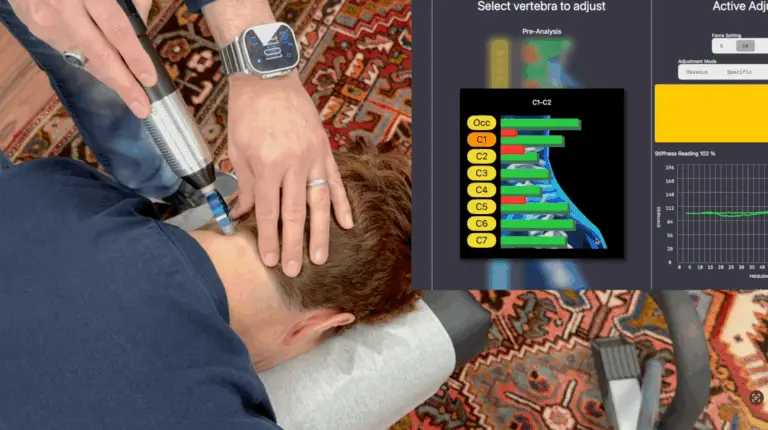As a chiropractor, you have a wealth of knowledge regarding the human body and how to utilize adjustments to help alleviate pain and facilitate healing. If you have embraced chiropractic tools like PulStar, you also know the tremendous value they add to your practice and the myriad of ways both you and your patients can benefit from their use. Multiple impulse therapy and visualized instrument adjusting are incredibly effective for treating musculoskeletal issues and can attract patients seeking an alternative to manual adjustment.
While you may be familiar with the advantages of PulStar, your patients are unlikely to be. In fact, they may be totally unfamiliar with the computerized adjusting device and instrument adjusting in its entirety. As such, it’s important to be able to clearly communicate with them about PulStar, how it works, and the benefits of opting for adjustment via chiropractic tools.
Don’t worry; you don’t have to go at it alone. We’ve compiled the guide below to help you talk to your patients about PulStar.
Introduce the PulStar
Many patients are unfamiliar with instrument adjusting. Even if they are familiar with the concept, they may not know what differentiates the PulStar from other instruments. Introducing the PulStar, including its basic functions, is a great starting point. You don’t have to get into the details of how everything works–that might overwhelm some people–but explaining what multiple impulse therapy and computerized instrument adjusting are, as well as the practical benefits is a good place to start.
Alleviate Stress
People who have not received instrument adjustment before may be hesitant or anxious. Often, this is a matter of unfamiliarity. By addressing common concerns, including reinforcing the safety, gentleness, and efficacy of PulStar, you can put stress to rest preemptively. Focusing on the advantages of instrument adjusting, including the precision application of force and reduced need for physical manipulation, can go a long way toward increasing comfort levels with the new experience.
Answer Questions
Every patient is different. Some may be brimming with detailed questions about PulStar and its applications, while others may be confident in the device and treatment without much curiosity. Either way, it is important to give patients an opportunity to ask questions. Not only can this reduce any anxiety they may be feeling, but it will also allow you to further explain the benefits and make them applicable to the patient’s specific situation. Allow their questions to direct the conversation–listening is equally as critical as providing practical answers.
Walk Them Through the Treatment
Before you begin the session, give the patient a preview of what a typical treatment with PulStar will entail. You can start with generalities, then progress to their particular session, giving you an opportunity to make your discussion directly applicable to them. By previewing what is to come, you can remove the mystery and increase patient confidence. This also continues the process of educating the patient about the device, how it works, and how it can benefit them.
Start Slow
Rather than jumping straight into a full-blown session with the PulStar, consider starting slow and continuing your conversation as you do so. Hands-on education is often easier for patients to understand than simply talking about the device. Show them the equipment, the software, and how everything interacts. You can then perform a few adjustments (if the patient is ready), pause, discuss it, and progress from there. You can even show them what it feels like at a low force setting adjusting or analyzing their hand. Some patients may adapt quickly; others may need time to acclimate and grow comfortable with the process. Don’t feel like it’s all-or-nothing the first time–the less pressure you put on the situation, the better.
Follow Up
After your discussion and potential first session, be sure to follow up with the patient. This allows you to gauge their comfort level, answer any questions they have after the fact, and adjust your approach accordingly. It also shows that you are taking a genuine interest in their well-being. A simple email or phone call in the days following can work wonders for your doctor-patient relationship. Emailing the visit info via the HIPPA-compliant email system built into the PulStar is also a great way to build their trust and allow for referrals.
We hope this quick guide on how to talk to patients about PulStar helps you successfully belay their anxiety, onboard them without issue, and even attract new people to your practice. If you would like more information about PulStar, including how to best start and hold a conversation about it and its many benefits, feel free to reach out to us. We’re always here and happy to help.











